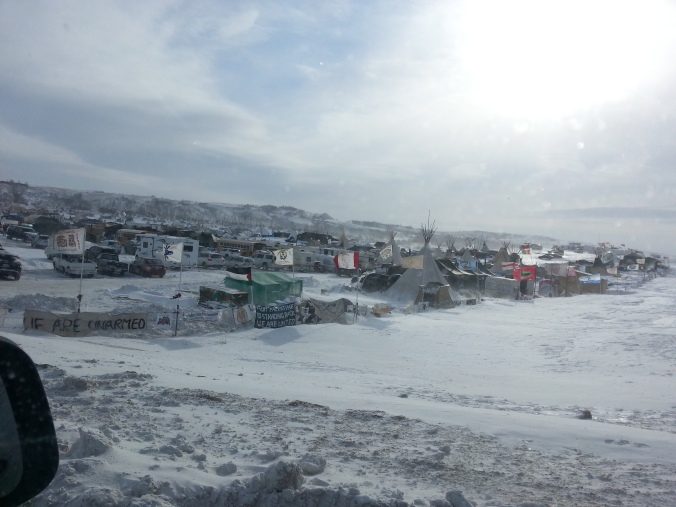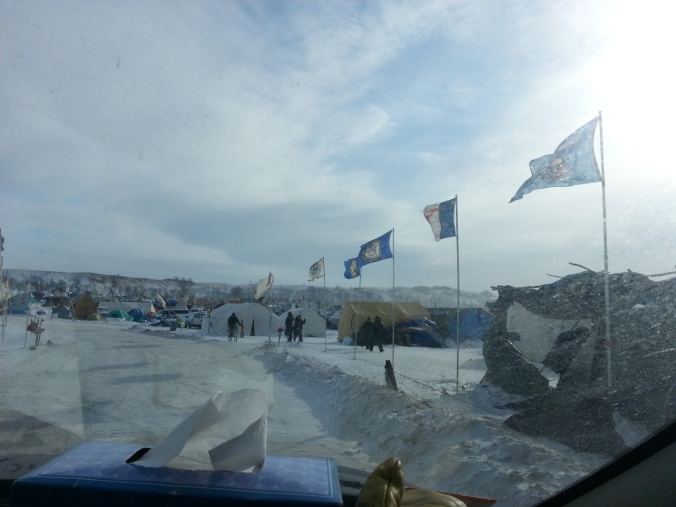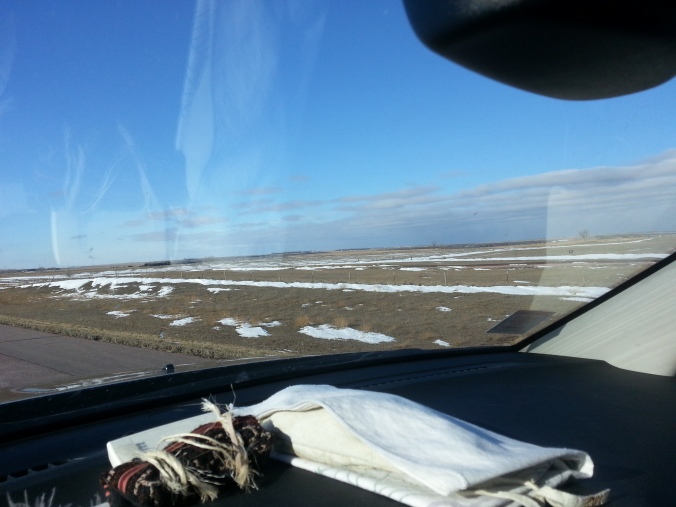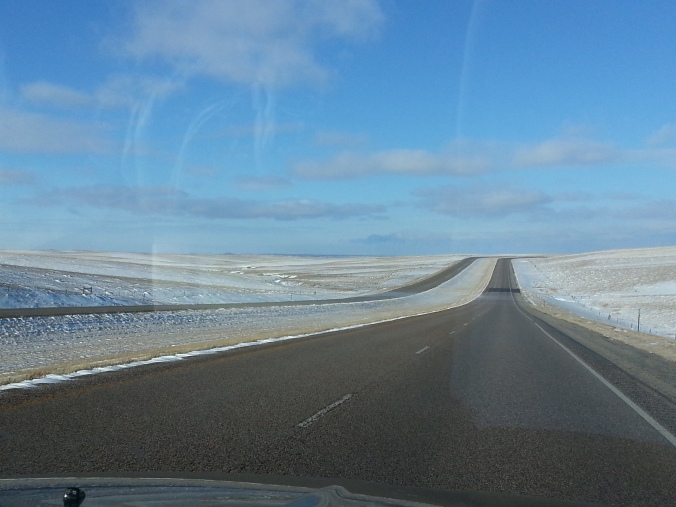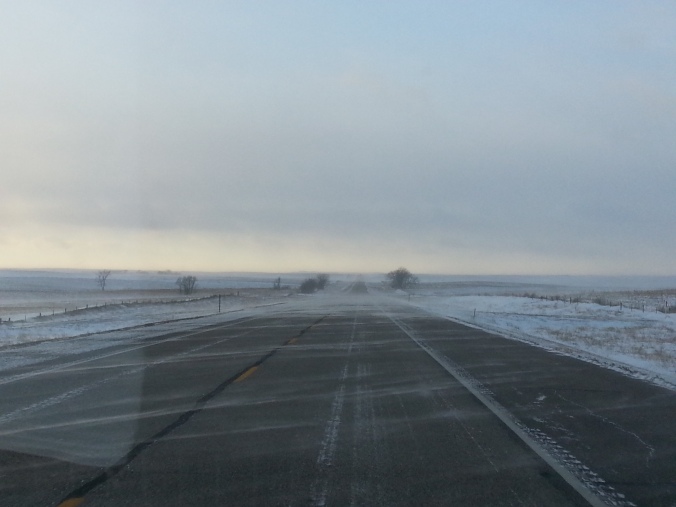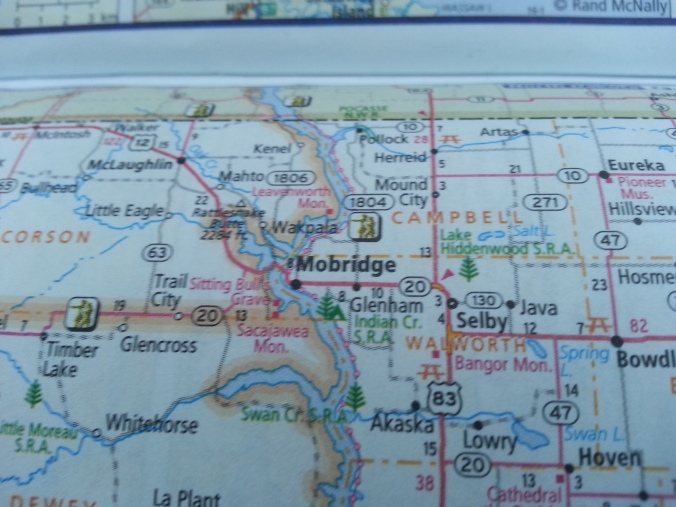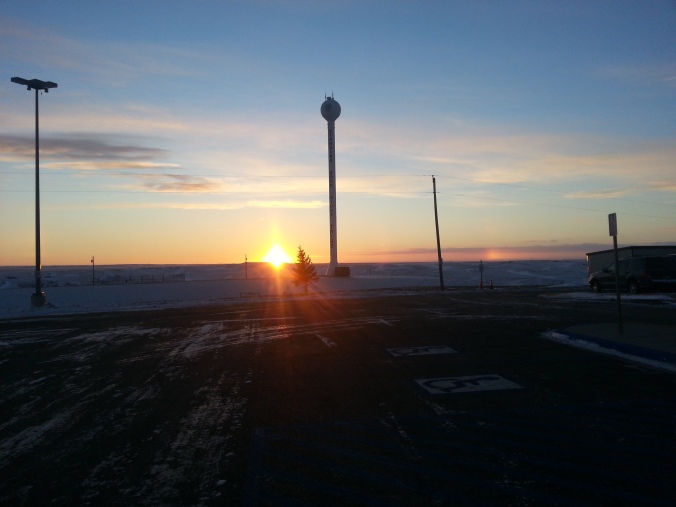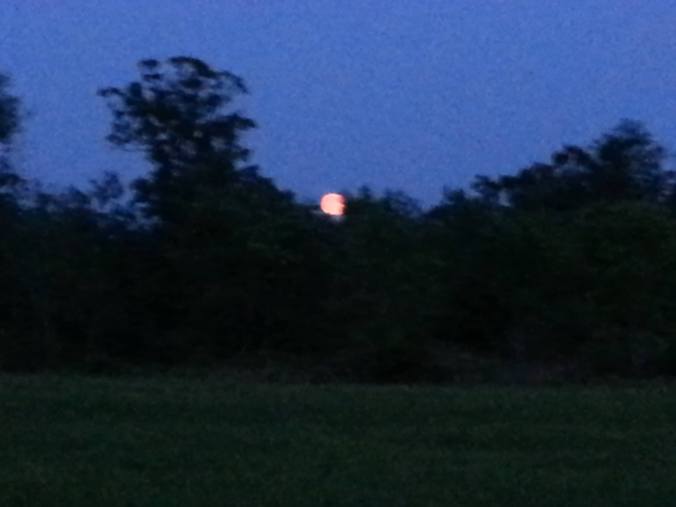
The enormous full, Cold Moon, rode with us home. She rose breath-takingly huge and ruddy orange ahead, as we drove east through the Poconos and descended through the Delaware Water Gap. When we turned north on the New York State Thruway, she accompanied us, riding along beside, watching over us like a comforting companion, as she climbed above the crusty trees, illuminating the familiar hills of our home territory. When we’d set out, almost two weeks earlier, the sky was also clear, and we had driven toward an upturned fingernail crescent setting in the faint sunset glow. Now, her whole face is visible. In my mind I hear Ellen’s song, Night Leaping, “The only light is the moon and I know she is smiling.”
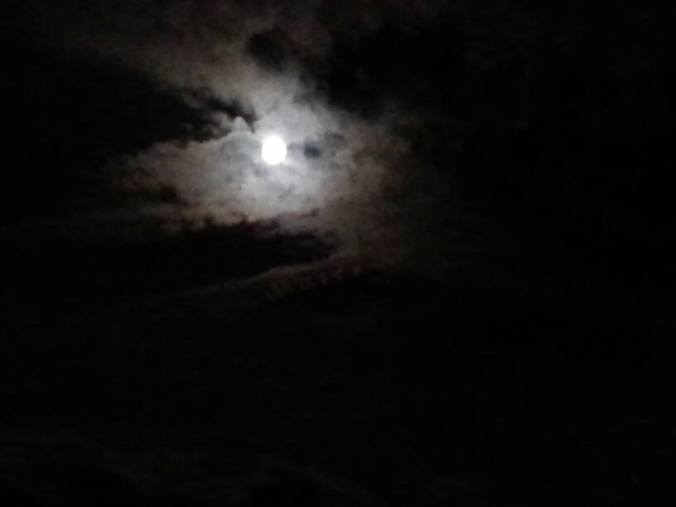
My thoughts return, as they often have on this trip, to the many who so passionately offered whatever each was able to give. Once again, I feel tremendously moved—but this time not only uplifted by our community’s generosity and support of me and Rod in making this journey— but rather by the deep desire of so many, many people from all over the land, to help the Water Protectors. This struggle speaks deeply to people everywhere who want to reach out in solidarity in any way possible.
I remember again the lines of cars that streamed in to Oceti Sakowin from points all over the U.S., all of us like ants carrying our tiny, purposeful loads, our treasure carefully collected, borne with love, to deliver with gratitude and hope to those at the center of this vortex, those bravely leading this nascent movement. It is a movement for self-preservation, and for the preservation of all of us. I am grateful to have had the opportunity to deliver the supplies, the funds, the blessings and the offerings from our community to the community at Standing Rock. In a very tangible way, it connects us and makes us all one community. We are one.
The movement birthing at Standing Rock is about the protection of the Missouri River watershed and is about protecting all water—our Mother Earth’s blood—the life-blood of all living things. The cry “Mni Wiconi,” “Water is Life,” is literal truth. This movement is also about stopping our use of polluting fossil fuels and halting the heating of the planet before it becomes uninhabitable for most species, including our own.
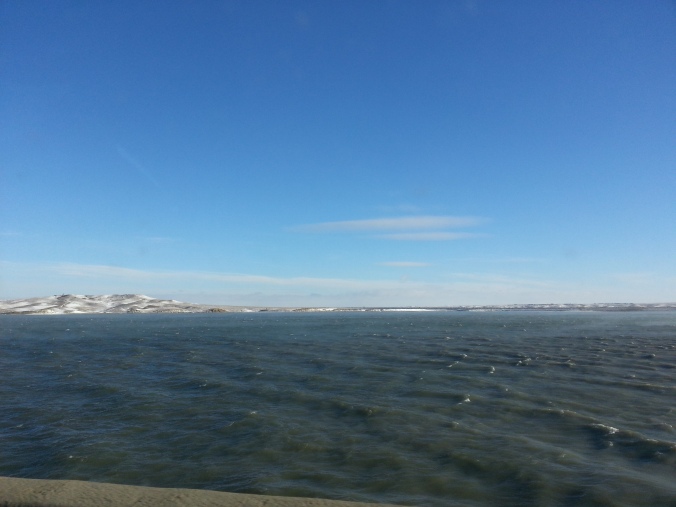
The resistance at Standing Rock is essential to the life of the Missouri River and to all those who depend on her, and that resistance is also critically important symbolically. There are thousands of other pipelines contaminating the water and land of many millions around our country, and around the world (the Amazon, for instance is being poisoned every day by continuous leaks), yet it is the resistance to this one river crossing, in a harsh and sparsely settled land, that has captivated national consciousness and inspired action all over.
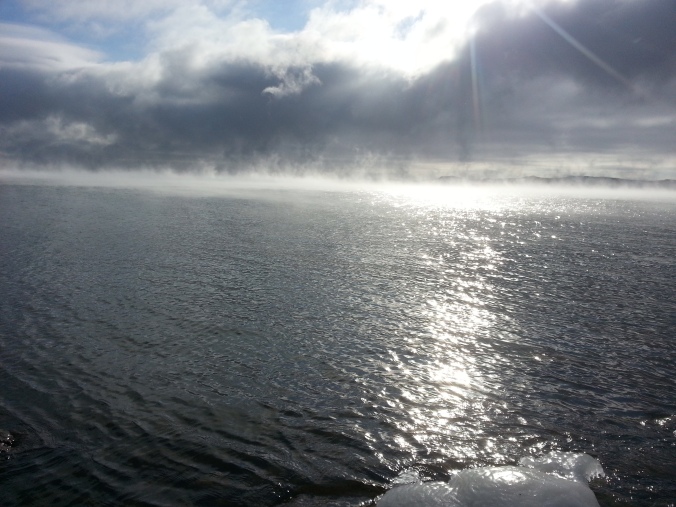
We—people everywhere—are desperate; the horror of the recent election farce and impending (present) fascist corporatocracy, the specter of irreversible climate disaster, the destruction of the earth and each other due to the unending, insatiable greed of the few for ever more power and money, has created a collective urgency for real change. We know there is no time left.
The budding movement at Standing Rock has tapped into this deep need of people everywhere to make positive change, to act against the overwhelming and terrifying threats facing humanity and the earth. We must channel that into action in our own communities, as well as on the national and global levels. We must think and act, locally and globally.
And it is a movement modeling peaceful direct action. Now that the U.S. government openly and blatantly sides with the life-destroying corporations, now that even the façade of democracy has been pulled aside to reveal corporate collusion, the only choice we have is to put our bodies on the line. The action at Standing Rock not only demonstrates a way to resist and stand up to the entrenched power structure using just the power of moral courage to defeat this one pipeline, it is showing the path of nonviolent resistance for all of us. Standing Rock is demonstrating a way forward, it is the beginning of the essential paradigm shift that must occur if we are to survive. That is why this resistance has catalyzed so many to act. We must each act in our own lives; stand up against the wrongs we encounter all around us, in whatever ways we are able.
Like the great non-violent teachers and movements of previous eras, we must respond to hostility and brute force with peaceful resistance; we must keep showing up and showing up. We must expose the violence and greed for the hideous monster it is, a monster that threatens to destroy humanity and our planet, unless it is stopped now. We have no time to delay. In the words of Martin Luther King Jr., “In this unfolding conundrum of life and history, there is such a thing as being too late. This is no time for apathy or complacency. This is a time for vigorous and positive action.” This is the critical moment. We must change the paradigm completely. Now.
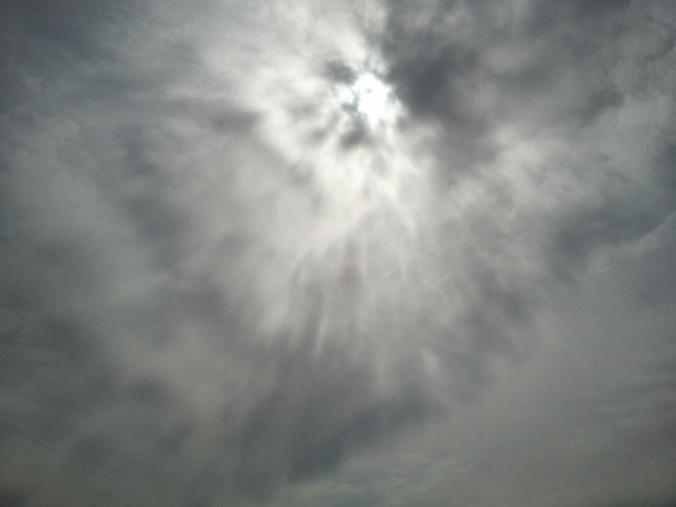
We are in a deep, dark fog. We are in danger of becoming lost in the swirling clouds of hopelessness and despair. Nothing familiar is visible—we can even become invisible to ourselves—everything is confusing, the way forward is obscured. But there are candles that light the path ahead. The Standing Rock resistance is one such light. We must follow the candles in the fog, one by one.
We must be the candles in the fog.
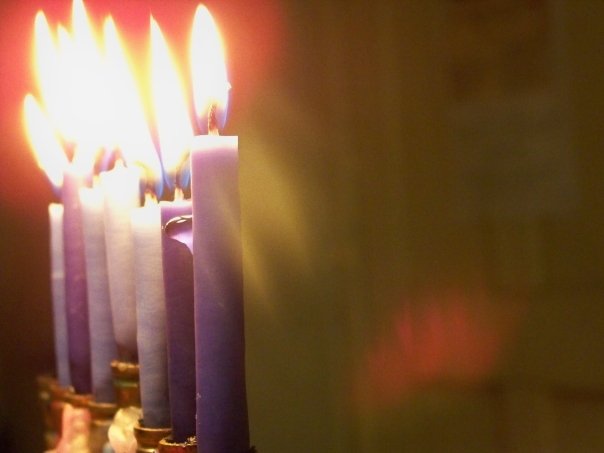


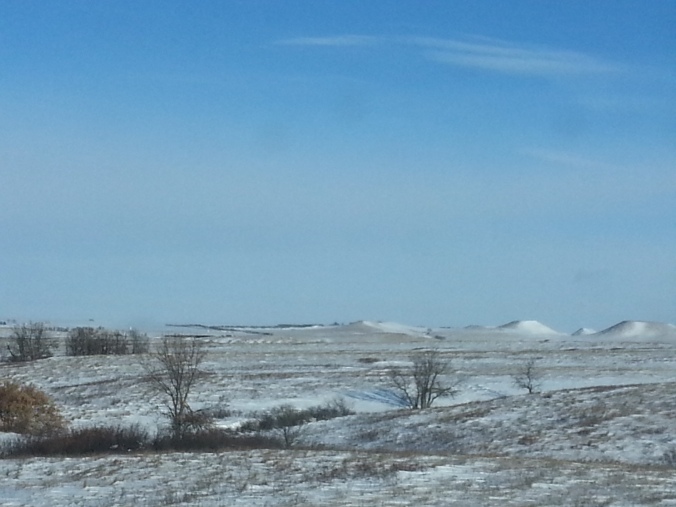 We are now one day away from home. The return trip has been slower; a time of reflection, a time of integration of this brief but intense experience. The lessons seem to seep in, maybe as we drive through the ever-changing landscapes of this vast land, perhaps even as we sleep.
We are now one day away from home. The return trip has been slower; a time of reflection, a time of integration of this brief but intense experience. The lessons seem to seep in, maybe as we drive through the ever-changing landscapes of this vast land, perhaps even as we sleep.









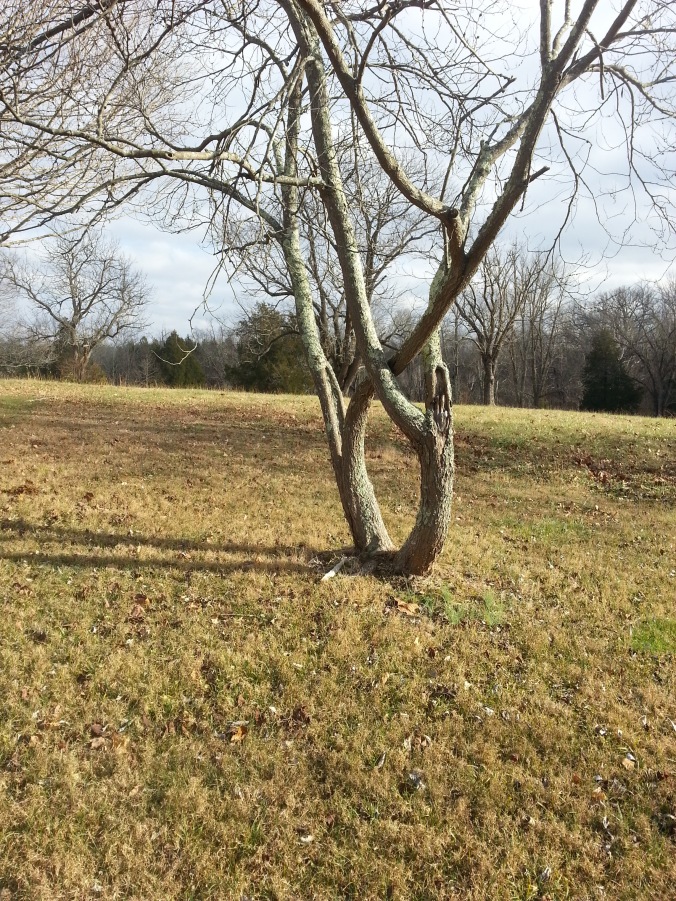






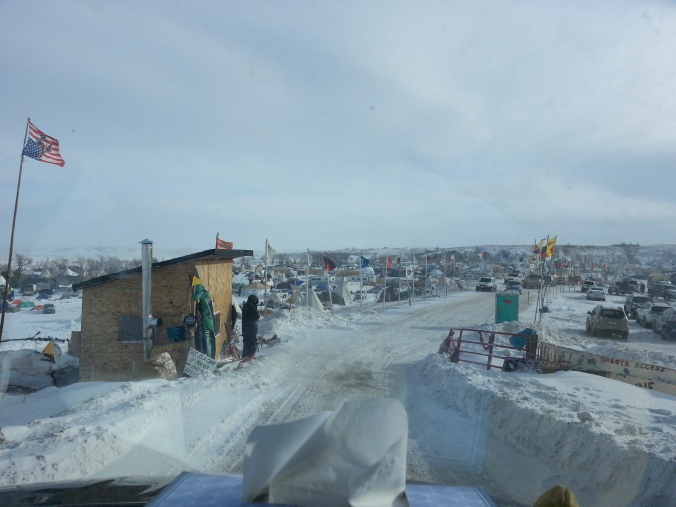
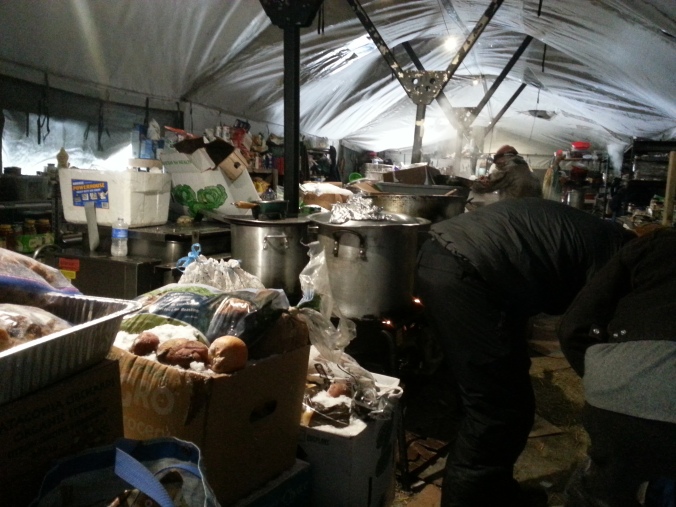 We bring snack stuff to the Mess Tent where a young woman is describing all the menu choices (including vegan options) and serving from big pots and trays cafeteria style. We stop for a few moments to devour some squash soup which is the best squash soup ever, despite the little hard chunks of something I can’t identify and keep picking out.
We bring snack stuff to the Mess Tent where a young woman is describing all the menu choices (including vegan options) and serving from big pots and trays cafeteria style. We stop for a few moments to devour some squash soup which is the best squash soup ever, despite the little hard chunks of something I can’t identify and keep picking out. I also realize that the sheds we’ve been walking past, where people are sitting behind a plywood wind break, and announcements are being made, is actually the Sacred Fire. Somehow I hadn’t imagined the Sacred Fire to be so small or right in the hustle and bustle of the camp, but then I notice that people are sitting near it, praying quietly. I pull my long skirt out of my bag and slip it on over my snow pants, as requested on the Oceti Sakowin website as a sign of respect. I’d brought it a bit reluctantly, resistant (as I’ve been my whole life) to being instructed to dress according to a code. But wearing it is transformative. Suddenly I feel no longer an outsider, I feel as if I belong.
I also realize that the sheds we’ve been walking past, where people are sitting behind a plywood wind break, and announcements are being made, is actually the Sacred Fire. Somehow I hadn’t imagined the Sacred Fire to be so small or right in the hustle and bustle of the camp, but then I notice that people are sitting near it, praying quietly. I pull my long skirt out of my bag and slip it on over my snow pants, as requested on the Oceti Sakowin website as a sign of respect. I’d brought it a bit reluctantly, resistant (as I’ve been my whole life) to being instructed to dress according to a code. But wearing it is transformative. Suddenly I feel no longer an outsider, I feel as if I belong.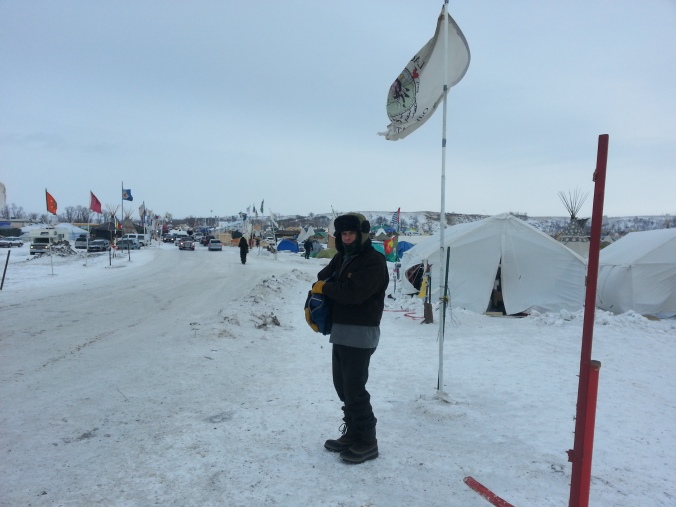
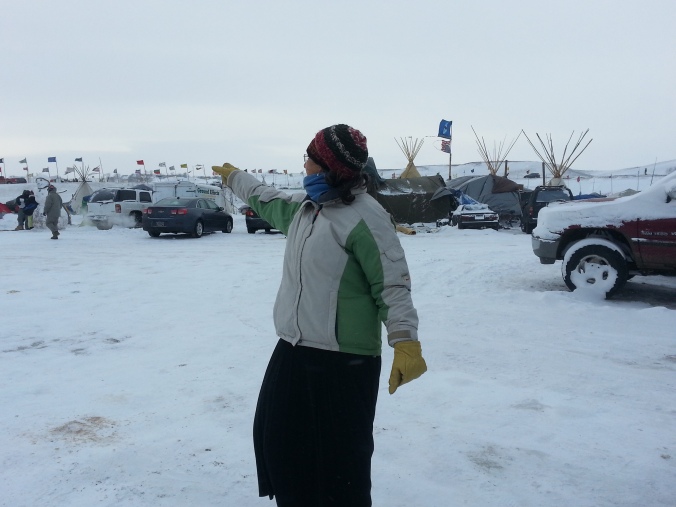
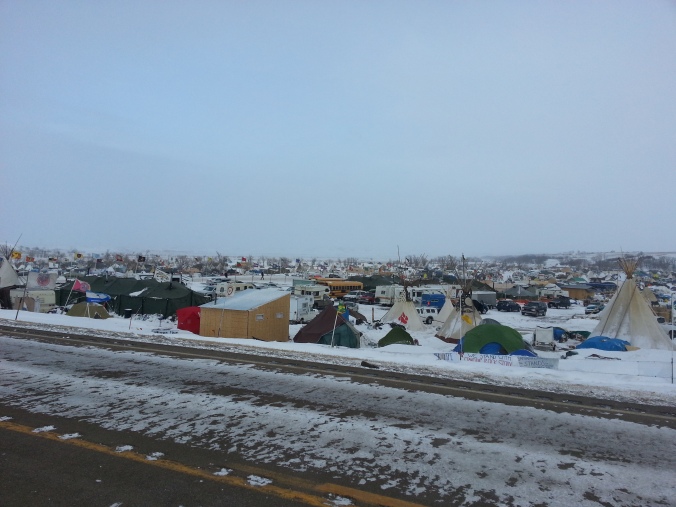
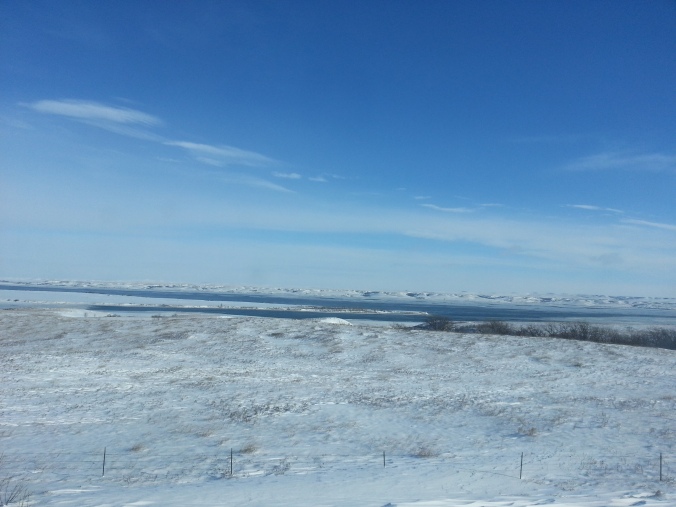 The further north we drive, the more severe the cold and the wind. The sky darkens, and the road is indeed icy and at times covered with drifts. We pass many cars in the gullies perpendicular to the road, some have clearly been there for days judging by the drifts encasing them; one is resting on its roof like an upturned turtle, another faces the road and we can see the smashed front. At Fort Yates we top off our gas tank in case we end up beside the road also. I am stunned by the cold and the wind. I’m from Vermont. I thought I knew winter. This is a different order of magnitude. Iowa and South Dakota were windy but when we get out at the gas station, the cold rips through me; this new wind is intense. We put on even more layers and keep going, slowly and steadily into the worsening weather.
The further north we drive, the more severe the cold and the wind. The sky darkens, and the road is indeed icy and at times covered with drifts. We pass many cars in the gullies perpendicular to the road, some have clearly been there for days judging by the drifts encasing them; one is resting on its roof like an upturned turtle, another faces the road and we can see the smashed front. At Fort Yates we top off our gas tank in case we end up beside the road also. I am stunned by the cold and the wind. I’m from Vermont. I thought I knew winter. This is a different order of magnitude. Iowa and South Dakota were windy but when we get out at the gas station, the cold rips through me; this new wind is intense. We put on even more layers and keep going, slowly and steadily into the worsening weather.